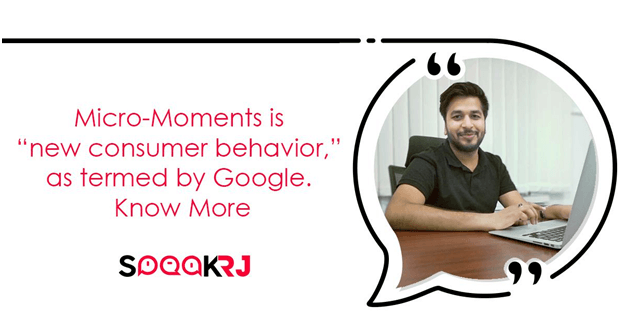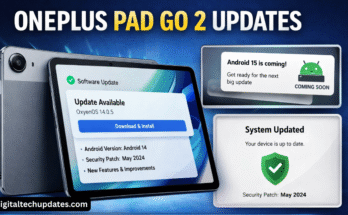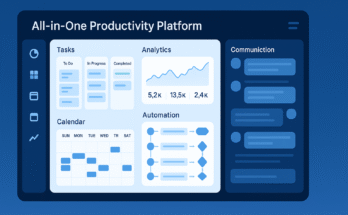Remember Google GOOGL +0%’s Zero Moment of Truth–that moment when a consumer began his or her digital journey through search and next steps were defined by what made a list? Well, Google just shared research regarding the micro-moments, new consumer behaviour for marketers to learn and master, and it’s a game changer.
What makes this new moment exciting and equally challenging is that it’s not one moment; it’s a series of micro-moments that amount to the new reality of consumer behaviour. Building upon the ZMOT (Zero Moment of Truth) and the consumer actions that followed, these new micro-moments unbundle activities and break them into smaller, more manageable scenarios.
Before we can understand the magnitude of Google’s new micro-moments, I will discuss how they expand the company’s perspective on the ZMOT (Zero Moment of Truth).
In 2011, Google published an ebook written by Jim Lecinski, Winning in the ZMOT, that helped those in search, advertising, marketing, and social win in the early phase of discovery.
The concept was that once a user searches on Google and your ZMOT strategy got the attention of that consumer, Google has helped you connect the dots between the next moments of truth to get more successful customer relationships:
Google identifies four key types of Micro-Moments:
- I-Want-to-Know Moments: Consumers turn to their devices to seek information, explore options, or research topics of interest. They may search for product reviews, how-to guides, or answers to specific questions.
- I-Want-to-Go Moments: Consumers are looking for local businesses, services, or attractions nearby. They may search for directions, store hours, or nearby amenities.
- I-Want-to-Do Moments: Consumers are seeking guidance or assistance in completing a task or activity. They may search for tutorials, recipes, or DIY instructions.
- I-Want-to-Buy Moments: Consumers are ready to make a purchase decision and may be comparing products, reading reviews, or looking for deals. They may search for product information, prices, or nearby stores.
FMOT (First Moment of Truth):
Introduced by P&G, it’s what people think when they see a product, and the impression that are formed when they read the words that describe a product.
Second Moment of Truth (SMOT):
It’s what people think, feel, hear, see, smell, taste, and touch as they experience the product over time. It also depends on the customer service.
Shortly after the release of ZMOT, I introduce you to what I called the UMOT (Ultimate Moment of Truth): the moment when people go online to post about, share their experiences, or otherwise review a product.
Recently, I reached for my mobile when shopping for a blender. I had to narrow the list of options, learn about the value of each and understand what people considered after analysing competing mixers. I didn’t have time to perform research conventionally. However, as we live in an information world, according to modify, 90% of consumers will utilise multiple screens to achieve their goal.
If You Aren’t Striving for Attention Where It’s Concentrated, You are not Striving to Win.
Here’s something, in these micro-moments you are by knowingly or unknowingly, engaging or disingenuous, helpful or inconvenient. Customers expect answers and management their way, at the right time, on the gadget and in the channel they are engaged.
It’s like that proverb, “if a tree falls in the forest, and no one heard it, did it make a sound?” The same can be implemented in micro-moments. If micro-moment hits and you cannot engage a consumer, then that consumer can only work on what they know.
Traditional content strategies and ad buys have given way to various short bursts of digital activity as they occur throughout the day. They may be unpredictable or continuously evolving, but they’re not temporary. As Google states, micro-moments are moments of high engagement and intent, many of which, happen in additional moments, like generally when not preoccupied with something else, waiting in line, commuting. The journey then resumes later either on mobile or through an entirely different medium such as a tablet or laptop. You can design for these new possibilities. And make no blunder; they are moments for engagement, no disturbances.
Now that Google has launched micro-moments, everything tends to change, at the same time makes more sense. The customer journey is infrequently linear in a world of endless digital distraction, aka “short-attention-span theatre.” Google’s concept of micro-moments represents the new frontier of digital marketing strategy. It is all real-time, and everything is on high-demand.
Remember, without discovery or engagement, and there can be no attention. Nowadays, there is no one to design a customer journey map. No matter how your pipe is designed or supported, your customers are changing it to suit their needs. Instead, marketers must figure out and invest in a series of micro contextual moments that meet customers in their domain when, where and how they need. More so, each micro-moment must connect consumer purpose with the desired result that the future of marketing starts with recognizing these new moments to learn how to make each matter.
Author Profile:
Rajat Jain is the Founder & CEO of ShootOrder – Digital Marketing Agency & Whizsky. He believes in relying on an evidence-based thought and work process backed by the scientific method. He thinks that there should always be a ballet of these elements to bring out the best results for marketing. The two eyes to the embodiment of these ideas are – ShootOrder and Whizsky. ShootOrder is a Digital Marketing Agency that has excelled in the niche of the Hyderabad market and expanding nationally. Whizsky is a Digital Media Publishing House that caters to the needs of the audience with trends and new founding in the field of digital marketing.




